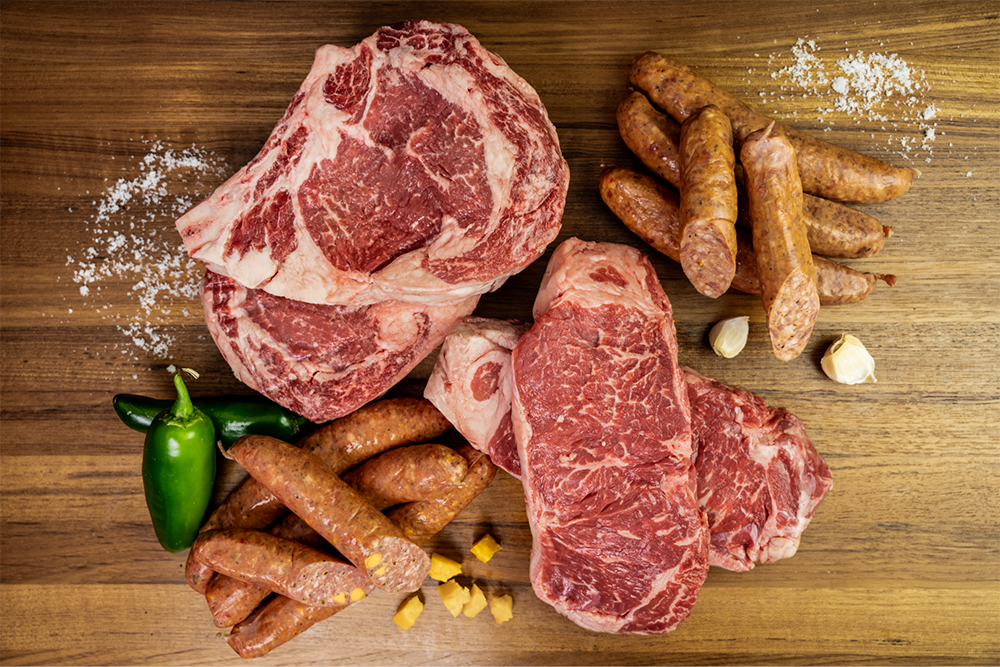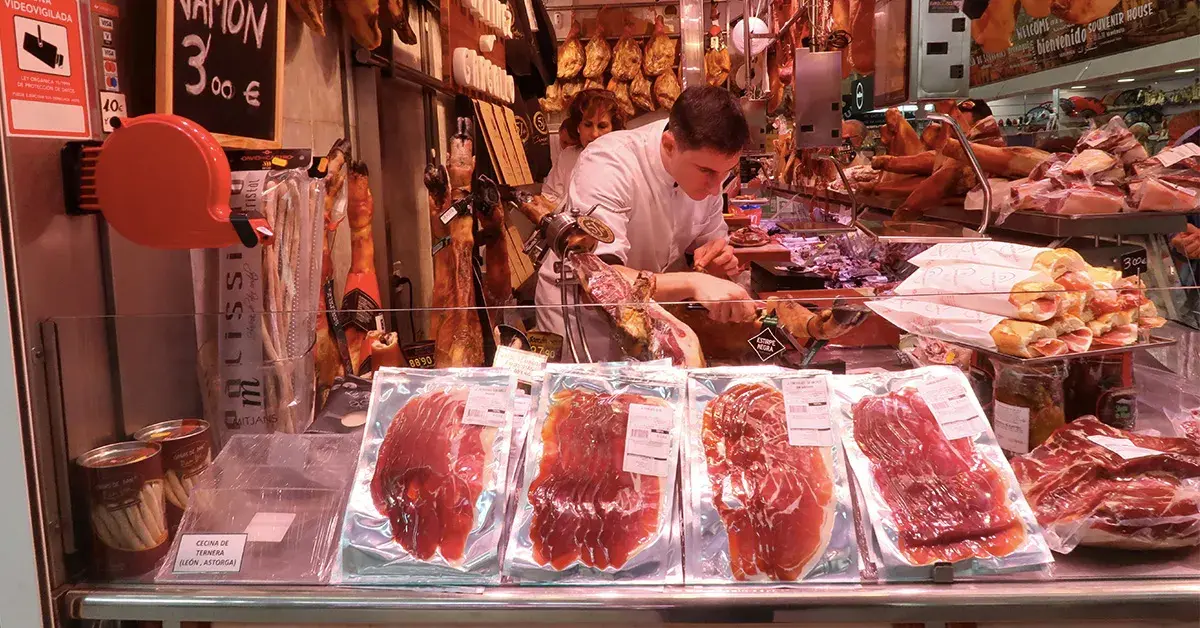Top Factors to Shop at Bagley Farms Meat Market Edwardsville IL for Costs Meats
Top Factors to Shop at Bagley Farms Meat Market Edwardsville IL for Costs Meats
Blog Article
Uncover the Art of the Butcher's Cut in a Modern Meat Market
In the ever-evolving landscape of modern meat markets, the butcher's cut has actually transcended its standard origins, combining olden craftsmanship with contemporary techniques. What genuinely sets the contemporary butcher apart is their capability to create a much deeper connection in between customers and the origins of their meat.
Advancement of Butchery Strategies
The advancement of butchery strategies shows an abundant tapestry of innovation and adaptation driven by improvements in innovation, changes in consumer need, and a deeper understanding of meat scientific research. Historically, butchery was a craft gave via generations, with techniques refined over centuries to make best use of yield and flavor. The industrial transformation ushered in mechanization, changing typical methods and making it possible for large-scale processing.
The mid-20th century saw butchery strategies better fine-tuned by clinical insights right into muscle biology and meat aging, improving both inflammation and preference. Innovations like vacuum cleaner product packaging and refrigeration extended item shelf-life, enabling butchers to expand offerings and enhance quality assurance. This period likewise marked the increase of customized equipment, such as band saws and meat slicers, which enhanced accuracy and effectiveness in meat processing.

Computerized systems currently aid in tracking animal provenance and maximizing cuts to meet particular client choices. Furthermore, a revival in artisanal butchery has actually arised, blending conventional abilities with contemporary knowledge to cater to customers seeking honest and sustainable meat options.
Comprehending Meat Cuts
Understanding the ins and outs of meat cuts is vital for both butchers and customers looking for high quality and worth. For butchers, precise cuts show skill and regard for the craft, guaranteeing minimal waste and optimal return.

Recognizing muscle mass composition is vital; muscular tissues made use of much more regularly by the pet often tend to be tougher and are best fit for sluggish cooking techniques, while less-used muscular tissues, like those found in the loin, are a lot more tender and ideal for grilling or roasting. Knowledge with these differences equips customers to make enlightened choices, enhancing their cooking ventures.
Choosing High Quality Meat
Choosing the appropriate meat involves more than simply picking a visually appealing item from the display screen. bagley farms meat market edwardsville il. The art of picking quality meat requires a critical eye and understanding of details qualities that signify quality and quality. Pay attention to the shade; beef should have a brilliant, cherry-red shade, while lamb needs to display a soft pink tone, and pork a light pink. This suggests the meat is fresh and hasn't been revealed to oxygen for also long.
Second of all, think about the marbling, which describes the white streaks of fat within the muscle. Proper marbling is a crucial indication of tenderness and flavor, as it melts throughout cooking, improving the meat's juiciness. Bear in mind, higher marbling frequently correlates with exceptional top quality cuts, such as USDA Prime.
Texture is one more critical variable; meat needs to really feel firm to the touch, not slimed or overly soft. Furthermore, be mindful of the scent. Fresh meat must have a tidy, neutral scent, totally free from any kind of sour or off-putting smells.
Matching Cuts With Food Preparation Methods

On the other hand, tougher cuts like brisket and chuck roast are rich in collagen, which breaks down right into jelly when cooked slowly. These cuts are ideal for Discover More Here braising or slow roasting, allowing the meat to soften in time and create deep, complex tastes. Likewise, cuts such as short ribs and pork shoulder fare well with slow-cooking techniques, where prolonged cooking times transform their robust textures into succulent dishes.
Lamb shanks and oxtail, which call for long term cooking to soften, are best candidates for stewing or slow he has a good point simmering. These methods coax out abundant, hearty tastes while maintaining dampness. By recognizing the distinct qualities of each cut, cooks and home cooks alike can raise their culinary developments, ensuring each recipe is both satisfying and remarkable.
The Butcher's Role Today
Navigating the evolving landscape of the modern meat market, the butcher's duty today expands past simple prep work of cuts. Contemporary butchers are culinary craftsmens, instructors, and advocates for sustainable techniques. They bridge the void in between the farm and the fork by ensuring moral sourcing, recognizing animal husbandry, and prioritizing transparency in the supply chain. This shift reflects the growing customer demand for top quality over amount, where provenance and animal well-being are extremely important.
In addition to crafting precise cuts, butchers currently engage directly with clients, offering cooking suggestions and customizing choices to suit specific demands and choices. Their competence in meat aging, marbling, and flavor accounts encourages consumers to make informed choices, improving their cooking experiences. This individualized solution exemplifies the butcher's evolving duty as a relied on advisor in the kitchen.
In addition, butchers are critical in lessening waste, making use of entire pets to create diverse products such as sausages and stocks. This detailed strategy not only respects the animal however also straightens with modern sustainability objectives. In this way, the contemporary butcher symbolizes both custom and technology, adjusting to an ever-changing market while maintaining the artistry and integrity of their craft.
Conclusion
The contemporary butcher's craft elaborately weaves conventional methods with contemporary technologies, stressing lasting techniques and moral see it here sourcing. Proficiency in recognizing varied meat cuts and top quality indications encourages butchers to give enlightened referrals, straightening details cuts with optimum food preparation techniques. This proficiency not only elevates cooking experiences however likewise enhances the connection between consumers and the origins of their food. By honoring historical practices while embracing modern needs, the butcher's role remains essential in today's advanced meat market (bagley farms meat market edwardsville il).
Report this page